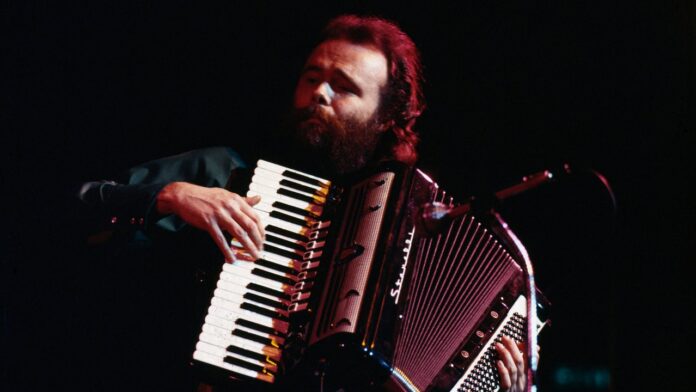Garth Hudson, who played the Lowrey organ, synthesizers, accordion, and woodwind with the Band, died in his sleep this morning (January 21), the Toronto Star reports. Hudson’s estate executor confirmed the news to The Star. Hudson was 87 years old.
Eric “Garth” Hudson was born to musician parents in Windsor, Ontario, before the family moved to London, Ontario, and enrolled him in formal piano and theory training from a young age. In his early twenties, to his parents’ alarm, he joined Ronnie Hawkins and Levon Helm in a rock band called the Hawks, assuaging his parents by stipulating that the group pay him an extra $10 a week for music lessons. He was the lineup’s final addition, joining fellow Canadians Robbie Robertson, Rich Manuel, and Rick Danko, as well as Helm and the soon-to-depart Hawkins; Hudson would go on to be the last surviving member of the Band.
Beyond the Band’s extended universe, Hudson was an active session player for the rest of his life, appearing on records by Leonard Cohen, J.J. Cale, Emmylou Harris, Daniel Lanois, Neko Case, and dozens of others. The Band were inducted into the Rock & Roll Hall of Fame in 1994, and earned a Lifetime Achievement Award from the Recording Academy in 2008. Hudson was given the Order of Canada honor in 2019 for his outstanding contributions to Canadian culture.
Source : Pitchfork






